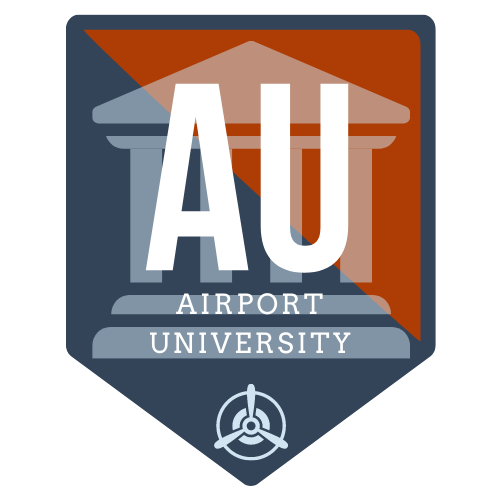What is a TNC?
A Transportation Network Company, or TNC, is a ridesharing company that uses a network such as a mobile app to connect a transportation service. More commonly known as Ubers and Lyfts. The TNC market has hit the airport industry hard. The long-term effects may not be realized yet, however, the effect is being felt.
Ground Transportation Before TNCs
Prior to Uber hitting the streets, ground transportation was traditionally taxis and supplemented by shuttles, limos, and town cars. Airports typically charge an access fee to ground transportation operators and often receive a percentage of revenue from the rides that originate from the airport. As common as regulating the picking up of passengers is, it is less common to regulate passenger drop-offs. Airport revenue generated from ground transportation is non-aeronautical revenue and important to airport operations, especially for those airports that have Compensatory or Hybrid agreements for rate-setting.
The Uber Effect
To say that Uber hasn’t affected the industry would be a lie. They have been a disrupter, aimed at solving our customers’ problems. Affordable, clean, and quality transportation quickly. The finances are speaking for themselves. It took more than four years from Uber’s launch for an airport to have a TNC agreement in place. Nashville (BNA) was the nation’s first airport to have a TNC agreement in place, leading the industry progressively. [1]Airport Cooperative Research Program., National Research Council (U.S.)., & United States. (2020). ACRP 215: transportation network companies: impacts to airport revenues and operations … Continue reading By 2016, over 60 airports allowed TNCs to operate on their property. That continued to grow to a whopping 368 airports in North America by 2019.
Financial Incentives
Uber, Lyft and other TNCs offer a solid revenue generation solution for airports. Both Uber and Lyft are well versed in how airports operate and what to expect. They are willing to pay the fees to be able to lawfully access the facilities. Your customers demand it anyway.
Ground transportation revenue per enplaned passenger grew from just over $6 in 2009 to about $6.60 in 2014, the last year that TNCs were not a factor. Although traditional ground transportation solutions have lost market share, the revenue grew to a record-breaking $6.90 in 2017 when TNCs were factored in. Without TNCs, the 2017 level dropped to about $6.50. [2] Airport Cooperative Research Program., National Research Council (U.S.)., & United States. (2020). ACRP 215: transportation network companies: impacts to airport revenues and operations … Continue reading Similarly, revenue for large hubs grew from just $1,000,000 in 2015 for TNCs to over $7,800,000 in 2017.
| Airport | TNC Tax/Fee | Notes |
|---|---|---|
| BOS | $6 pick up and drop off fee $4 trip fee | |
| DCA/IAD | $8 fee $5,000 activation fee | $250 violation fine |
| DEN | $5.20 fee | |
| DFW | $10 fee $600 annual permit fee | |
| LAX | $8 fee $1,000 activation fee | $200 violation fee |
Customer Service
Customers demand quality service and experiences. The current trends in ground transportation mean your airport has to have TNC access or risk facing social media scrutiny. Although traditional ground transportation methods can (and many do) provide outstanding customer service, this is not always the case. Uber and Lyft have built reputations for customer service and even have methods to rate the drivers and file complaints directly with the company. Oftentimes, issues with taxi drivers may become an airport complaint.
Current Trends
2015-2019
From 2015 to 2019, TNCs were growing in popularity and importance to airport revenue streams. The increases were both in number of airports served but also in revenue generated for airports. Prior to COVID hitting, this was expected to continue into 2020 and beyond.
COVID Effect
With COVID, the aviation industry took a beating, resulting in the worst year on record since 1984 and months that were worst in history. The reduction in passenger volumes destroyed the entire ground transportation market as well. Those who did travel were concerned that about being in a vehicle with a stranger. As the industry begins to rebound, time will tell how the long-term effects of COVID continue to play into ground transportation and TNCs.
2020 and Beyond
Before COVID hit, there were several trends that airport managers need to consider. TNCs can continue to disrupt other areas, including rental cars and parking operations. When considering funding CONRACs or parking garages, airports should consider the effects of TNCs and autonomous vehicles on the future needs of the airport facilities.
References
| ↑1 | Airport Cooperative Research Program., National Research Council (U.S.)., & United States. (2020). ACRP 215: transportation network companies: impacts to airport revenues and operations reference guide. Washington, D.C: Transportation Research Board. |
| ↑2 | Airport Cooperative Research Program., National Research Council (U.S.)., & United States. (2020). ACRP 215: transportation network companies: impacts to airport revenues and operations reference guide. Washington, D.C: Transportation Research Board. |


